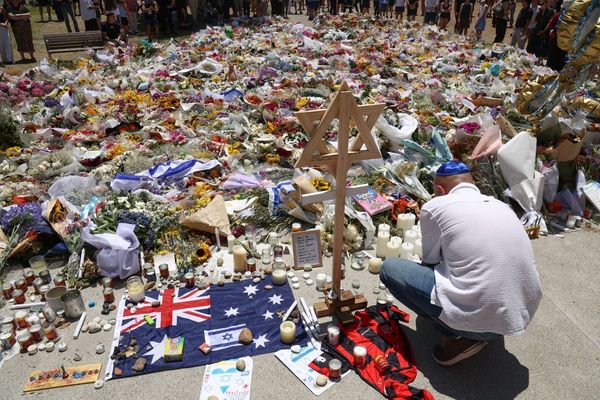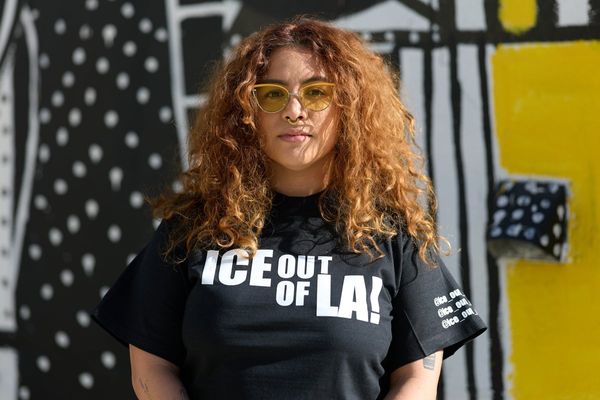Twelve Australians had spent about a week together poring over endless hours of evidence in a Sydney court when a note was sent to the judge.
On it was a question that offered a rare insight into how the jury – whose deliberations remain private under law – was weighing the credibility of a woman’s claim she had been raped, and whether a man was innocent or guilty of the crime. It asked: if a person accusing someone of rape voluntarily takes drugs or drinks alcohol, are they then accountable for the actions of the accused?
The judge, who had overseen the trial, told the jury that it cannot be assumed that someone being intoxicated means they consented to sex. Nor was that ever suggested during the trial.
Juries are chosen from a pool of randomly selected members of the public who embed community values into the justice system. This is meant to be the beauty of the system but among those values for some, experts argue, are long-held myths around what “real” rape is, and gendered stereotypes on how a victim-survivor, and a perpetrator, behaves.
A number of reforms have been made to dispel rape myths and misconceptions in the courtroom, and how much those myths are used to win a case is changing alongside community attitudes, experts argue. But still they persist.
“It’s really only in the area of rape that there seems to be such a disconnect between community values and modern [research],” says the former magistrate and dean of law at Southern Cross University, David Heilpern.
“I don’t think anyone really talks about murder myths or robbery myths or drug myths.”
A jury of her peers
The archetypal rape myth goes like this: a virtuous woman is attacked outside at night by a deviant man she does not know. The woman resists and therefore there are wounds that signal she struggled. The woman reports the rape straight away. In each retelling of the incident – to friends, police and ultimately the court – her memory of the incident is precise and it does not change.
This is at odds with reality. The vast majority of perpetrators are known to the victim, and most do not result in physical injury. Trauma can play tricks on memory.
It is also at odds with how most Australians now understand rape. The latest national survey on community attitudes surrounding the issue found in 2017 that 93% of those surveyed agreed a woman doesn’t have to physically resist for it to be rape.
But the report found these myths and misconceptions continue to leave a mark. One in four Australians surveyed still believed many allegations of rape by women were false. More than a third of those surveyed thought women were more likely to be raped by a stranger.
This finding led Australia’s National Research Organisation for Women’s Safety to further investigate in 2021 why this mistrust exists and how deep it runs. It found some rape myths remain as “cultural scaffolding” through which they understand this crime. For example, while many Australians know rape is mainly perpetrated by someone known to the victim, they were distrusting of those who had continued contact with that person afterwards or had previously had consensual sex.
It found suspicion and doubt entrenched in people’s thinking. Failure to promptly report to police or display emotional distress, intoxication at the time of the alleged rape, and changing details of their story, increased doubt. Though, the study did find people were hesitant to flatly disbelieve women.
‘Myth of neutrality’
How much and whether the verdict delivered by juries is influenced by misconceptions about sexual assault is unknown. Unlike judges, they are not required to give reasoning.
Heilpern argues juries are a poor method of assessing guilt and honesty due to community biases around rape myths. There is, he says, a “myth of neutrality that permeates our legal system”.
Back when he was a magistrate, Heilpern says he would often have to check himself during the hearing of evidence and consider: “Am I being influenced by my own biases, my own prejudice, my own prejudgment?
“But judges are professionals at recognising their own biases, allowing for them, counteracting them, and applying much more objective standards. That’s what we do.
“I think judges are way better placed to do that.”
Jacqui Horan, a jury expert at Monash University, agrees that jurors are subject to myths and misconceptions but says the beauty of having 12 is that they can correct one another on any sexist or racist biases during their deliberations.
Horan and a number of other experts Guardian Australia spoke to pointed out that judges can be equally “prone” to rape myths and misconceptions.
“[People on juries] have grown up in the same way that the judges have,” Horan says.
Horan argues that a panel of judges may be better than the alternative of a judge-alone trial.
Rape myths were overtly relied upon less
“Rape myths are alive and well in courtrooms,” says Julia Quilter, who co-authored one of the largest analyses of sexual offence trial transcripts in New South Wales.
Her 2023 report with co-author Luke McNamara found that rape myths featured prominently. The researchers analysed 75 trials that took place from 2014 to 2020 – before major affirmative consent law reforms and requirements that judges give juries directions to dispel common rape myths and misconceptions. In 52% of the trials analysed, the accused was found not guilty on all charges.
Associate Prof Mary Iliadis, a Deakin University criminologist, says she has found in research soon to be released that these myths and misconceptions play out in the courtroom through both defence counsel and prosecution access to private records of victim-survivors.
“I have seen through my research that defence counsel often go on fishing expeditions and subpoena counselling records of victim-survivors that predate the assault by about 20 years,” she says.
“We saw a lot of examples where these records were … weaponised against survivors, so things like victims’ journals, photos and even their clothing choices were questioned in ways that humiliated [and] embarrassed.”
But it is getting better. For a decade, Katrina Marson worked in the Australian Capital Territory’s criminal justice system, including as a prosecutor in the director of public prosecutions’ sexual offences unit until 2023.
“I’ve seen defence counsel become generally less overtly hostile and aggressive towards complainants in the witness box, perhaps because it risks alienating the jury,” she says.
Rape myths are being overtly relied upon less and less, she says.
Marson believes part of this is due to more of the general public having a more educated view of what rape is, and how victim-survivors behave. But she says both defence counsel and prosecutors have held on to “subtle ways” of playing on these myths.
“You can certainly guarantee that some jury members might hold some of these myths,” she says. “I think the reliance on myths by counsel is more insidious, like focusing on delay in reporting or differences in accounts.”
This, she says, can include questions such as “why didn’t you tell anyone?”.
On the prosecution side, if the complainant reported the alleged attack straight away, Marson says that would often be suggested to the jury as adding to the credibility of the accusations.
Marson says both the defence counsel and prosecution know that some jury members will respond to these myths. But, she says, it’s also symptomatic of the nature of the evidence – often one word against another – which means cases rise and fall on credibility. In other words, how believable a person and their version of events is.
This is unlike other types of crime – such as theft or murder – where there is often more physical evidence that can be relied upon.
“They are constrained by the case that they have, so I’m not surprised that some would then reach for those myths,” Marson says.
“That’s going to be informed by our broader social views about things like women, children, truthfulness.”
Marson says Australia’s adversarial court system – which sees the defence and prosecution present a different set of facts – means that a complainant’s account will always be tested.
“What I used to always say to victims when I was working in sexual offence matters was even if you have the politest, nicest defence lawyer who is asking you questions in the least hostile manner possible, being challenged on your account of what happened to you can be incredibly confronting,” she recalls.
“You’re talking about something that, for most people, is an incredibly personal, vulnerable experience.”
This challenge can include accusations the complainant is lying, which Marson says defence lawyers are required to lean their case on if that’s the claim of the accused.
According to the report by Australia’s National Research Organisation for Women’s Safety testing community attitudes, two-thirds of those surveyed were suspicious that women were motivated to make a false rape allegation to get back at men.
In Quilter’s research, she found women were accused of lying for a range of ulterior motives, such as seeking sympathy or revenge for an ended relationship. One complainant was accused of lying so they could get special consideration for a university assessment. The report suggested redefining relevance to limit challenges and assertions a complainant has lied.
Shortly after the report was released, the former criminal lawyer and NSW Labor MP Stephen Lawrence spoke to parliament about the report, and delivered a warning about this suggestion. He said false accusations can occur – pointing to a widely cited figure of one in 20 rape claims being found to be false – and that any changes need to stick to the criminal justice system’s aims of a fair trial.
Balancing two needs
There have been many reforms over the years to dispel rape myths and misconceptions and to minimise their impact on sexual assault cases and survivors.
This includes enabling judges to disallow questions that are repetitive, harass, humiliate, belittle or are based on a stereotype. But a number of experts spoken to for this story pointed out that judges rarely intervene.
Most jurisdictions allow the prosecution to call on expert evidence about memory and victim-survivor responses to sexual assault. Judges are also able to give juries directions in most jurisdictions about myths and misconceptions, delayed reporting and consent.
“We still don’t know how, if at all, that is impacting juries, because no one’s done that sort of study,” Quilter says. “But we also know it doesn’t necessarily change the experience of a complainant who’s still allowed to be cross-examined on [the basis of certain myths and misconceptions].”
In one court transcript Heilpern examined he said the directions by the judge took hours, which is not unusual, and within that are complex parts of the law which jurors must absorb.
“I wonder how much sinks in,” he says. “I would love to see a study quizzing jurors on that material afterwards on how much they digested and understood.”
In a submission to the Australian Law Reform Commission review, researchers from La Trobe University said their research found that directions given at the end of a trial came too late and had not been effective, and myths and misconceptions continued to resonate in trials. They found it was more effective when directions were delivered pre-trial and throughout.
Whether or not these need to be expanded or reviewed is being considered by the review, which is also looking at ways to lessen the retraumatisation of victim-survivors at the hands of the criminal justice system, to strengthen laws and to improve outcomes.
Marson says there are “bad faith arguments” that supporting sexual violence complainants in better ways will erode the right to a fair trial for the accused.
“I firmly believe that you can actually balance those two needs,” she says.
Marson left the criminal justice system in 2023 to work in sex education, saying she feels more helpful working in prevention rather than being the “ambulance at the bottom of a cliff”.
“I think there’s a lot of work that has to happen outside the courtroom at the community level before we ever get to the courtroom steps for some of those attitudes to shift.”
• Information and support for anyone affected by rape or sexual abuse issues is available from the following organisations. In Australia, support is available at 1800Respect (1800 737 732). In the UK, Rape Crisis offers support on 0808 500 2222. In the US, Rainn offers support on 800-656-4673. Other international helplines can be found at ibiblio.org/rcip/internl.html







